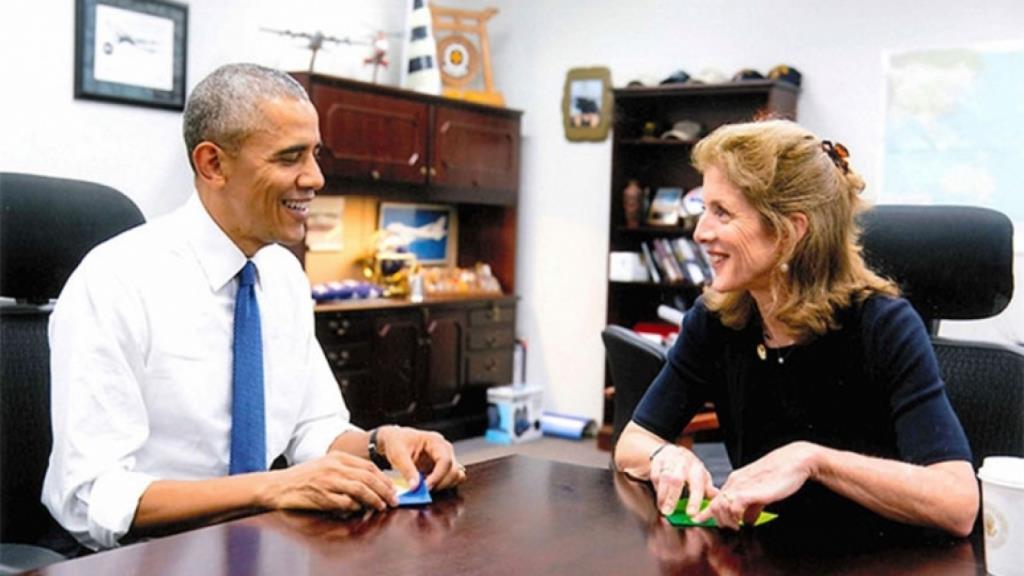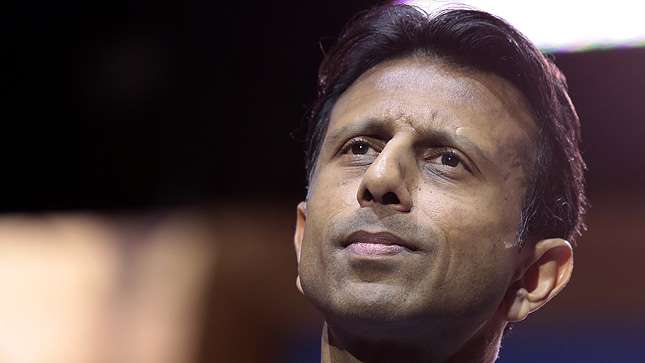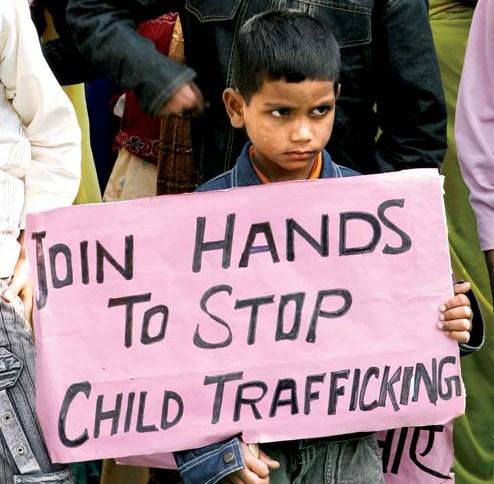January 18, 2017
Yoichi Funabashi is chairman of Rebuild Japan Initiative Foundation, a Tokyo-based think tank.

President Obama folds paper cranes and talks with Caroline Kennedy, U.S. ambassador to Japan, before delivering remarks last year to service members at Marine Corps Air Station Iwakuni, Japan. (White House photo by Pete Souza)
January 18, 2017
Yoichi Funabashi is chairman of Rebuild Japan Initiative Foundation, a Tokyo-based think tank.

President Obama folds paper cranes and talks with Caroline Kennedy, U.S. ambassador to Japan, before delivering remarks last year to service members at Marine Corps Air Station Iwakuni, Japan. (White House photo by Pete Souza)
Where else to begin about Ambassador Caroline Kennedy’s time in Japan than the end of her term? It featured her starring role in a lighthearted video from the U.S. consulates in Japan of a Christmas-themed “Koi” dance, which captured the hearts and smiles of the Japanese. Kennedy’s popularity was not simply a product of her celebrity background but also was grounded in her humility, accessibility, charm, grace and respect for Japanese heritage.
She made real, subtle contributions behind the scenes. One example was when President Obama visited the Hiroshima Peace Park Memorial and Kennedy suggested that he should look around the museum, after having visited Hiroshima herself several times as a student, diplomat and in company of Secretary of State John F. Kerry. She was keenly aware Obama’s visit to Hiroshima would not have had the same powerful, moving symbolism “beyond the test of words.”
On the other side of the alliance, the depth of Japan’s trust was shown when Prime Minister Shinzo Abe asked her advice on his statement to commemorate 70 years since the end of World War II. She advised Abe to make his reflections on the history between Japan and Korea more explicit. The text of Abe’s speech contained the line, “We must never forget that there were women behind the battlefields whose honor and dignity were severely injured,” which was a hint toward the so-called comfort women issue. In both cases, Kennedy played a crucial role in enhancing the meaning of the reconciliation efforts.
It was not always a smooth ride for Kennedy. In the initial stages, specialists met the appointment of Kennedy to such an important diplomatic position with skepticism, as she was without substantial government or policy experience and was not an expert on Japan. Obama and Abe’s relationship lacked natural chemistry, with a wide ideological, almost emotional, gap between them. The U.S. Embassy felt obliged to express “disappointment” at Abe’s visit to Yasukuni Shrine in December 2013, soon after Kennedy began her post. She was placed in a tough position. Helping the leaders to gradually warm to each other at Pearl Harbor was no small feat.
She showed her diplomatic negotiating hand in the politically sensitive, strategically vital Okinawa base relocation by reducing America’s footprint by about 20 percent. Japanese Foreign Minister Fumio Kishida described her as “an exceptionally tough negotiator” in the process of the Okinawa talks when U.S. strategic interests were on the line. Yet she also possessed a deft ability to grasp whether a major breakthrough could be reached through understanding the opposition. She voluntarily accompanied high-ranking Japanese officials to Washington to explain the Japanese point of view and hear objections firsthand. The approach was vindicated by the Japanese Supreme Court decision backing relocation on Dec. 20.
Japan has been fortunate to have had outstanding American ambassadors. Edwin Reischauer, under President John F. Kennedy, made monumental efforts to reach out to the Japanese public and work toward a more equal relationship after the occupation of Japan. Mike Mansfield, who served as ambassador from 1977 to 1988, elevated the relationship to a global partnership under his “bar none” philosophy — the belief that the relationship with Japan was the most strategically valuable one that the United States holds — as well as being instrumental in the “Ron-Yasu” relationship between President Ronald Reagan and Yasuhiro Nakasone.
Standing toe-to-toe with these great diplomats, the reconciliation gestures under Caroline Kennedy’s tenure are historic. The visits by Obama and Abe to Hiroshima and Pearl Harbor, respectively, did not actually create or cause reconciliation — the cause is a long strategic alignment process of compromise and cooperation which has been in the making for the past 60 years. John F. Kennedy envisioned visiting Japan in his second term to reconcile with the crew of “late enemy, present friend” Commander Kohei Hanami. In the Pacific War, Hanami was involved in the sinking of Kennedy’s PT-109. Thus, Caroline Kennedy made the finishing touches to the culmination of a reconciliation process that has long been underway.
As a final goodbye, she had the thought on a visit to ask the White House for a couple of origami paper cranes, part of the original batch sent to Hiroshima for Nagasaki, giving the city paper cranes permanently in place of borrowed ones from Hiroshima. The paper cranes folded by Kennedy and Obama symbolize hope for peace, the opportunity to reconcile and the importance of cultural understanding.
Courtesy: Washington Post















































































































